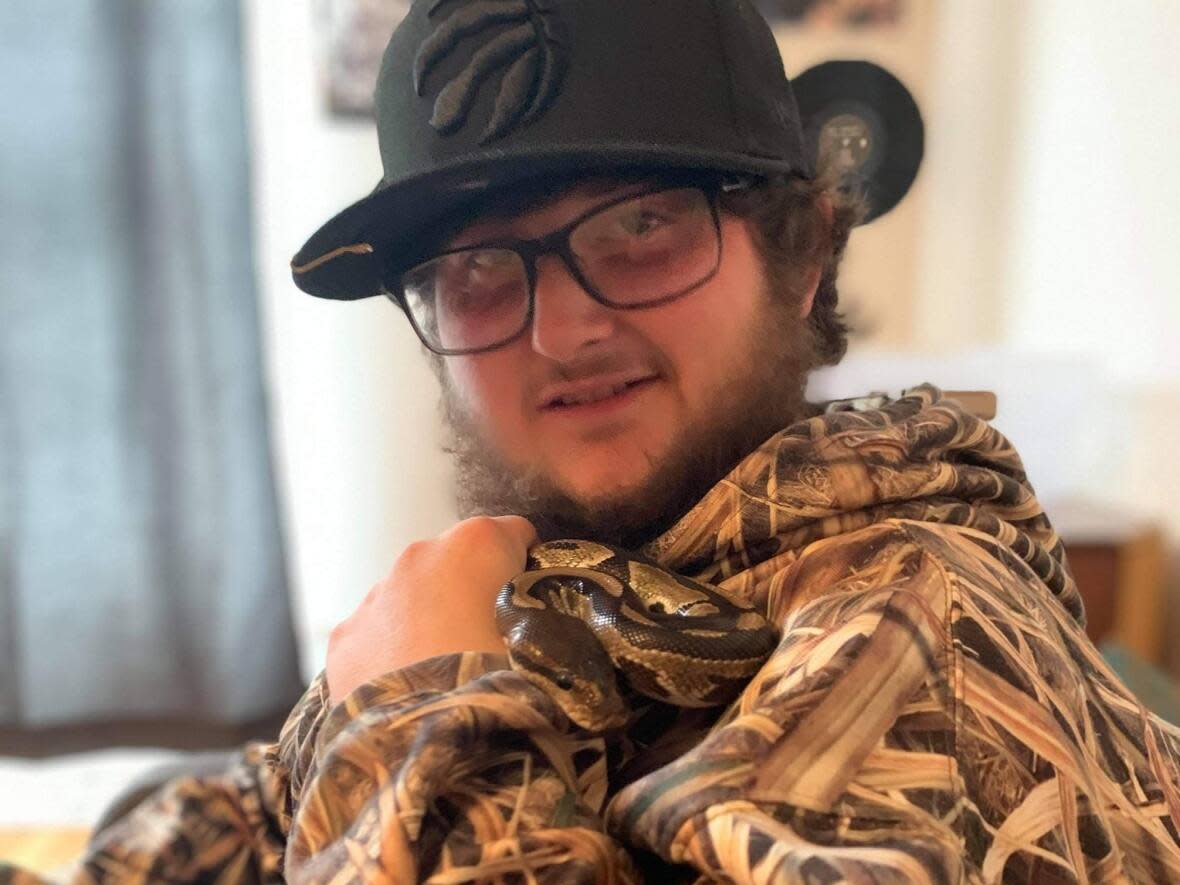Mother trusted toddler was safe with Saint John man who later killed him

WARNING: This story contains graphic content some readers may find disturbing.
The Saint John sentencing hearing for Karrson Bennett heard from the mother of the two-year-old boy he admitted to killing by putting a Ping-Pong ball in his mouth.
She cannot be identified because of a publication ban protecting the identity of her son.
On Sept. 18, 2021, Saint John police, firefighters and paramedics responded to a 911 call about an unconscious child who had swallowed a ball at a residence. The child was eventually airlifted to the children's hospital in Halifax but died the next day.
The boy's mother told the court on Thursday she had never let her son stay overnight alone with Bennett before that day, and had never seen anything that would cause her concern.
Bennett was very good with her children, the woman testified, remaining composed through most of her testimony.
She said she left her son alone with Bennett because she "fully trusted" him and believed her son "would be safe in his care."
Parole eligibility the issue
Bennett, 24, was charged with second-degree murder in the boy's death.
On Monday, which was supposed to be the first day of a five–week jury trial, Bennett changed his plea to guilty, admitting he intentionally caused the boy's death with the Ping-Pong ball.
On Wednesday, the Crown began a sentencing hearing.
While the charge of second-degree murder carries an automatic life sentence, the judge will have to determine the number of years Bennett must serve before being eligible for parole — between the 10-year minimum and the 25-year maximum.
Crown focuses on force used
The Crown has been clear that it hopes to get a lengthier term before Bennett is eligible for parole.
Prosecutors have said they believe the amount of force necessary to put a plastic Ping-Pong-like ball into a two-year-old's throat should be an aggravating factor.

Defence lawyer David Lutz has already acknowledged to the court that the minimum parole eligibility is unlikely for his client, given the circumstances.
Bennett also has a previous conviction for hurting another toddler. In fact, he was still on probation for that charge when he committed the latest offence.
In 2017, he was charged with attempted murder and aggravated assault. He admitted to physically abusing the girl on at least five separate occasions.
At the time, the court heard that Bennett suffocated the girl with water, hit her, and held his hand over her face until she turned purple and had to be revived.
On another occasion, he stuffed her into a tiny duffel bag, zipped it up to her neck and threw her in a closet.
Then he went out for a cigarette.
First responders couldn't see ball
Three police officers who responded to the 911 call on Sept. 18, 2021, testified that they took turns with a variety of First Aid methods but were unable to dislodge the ball.
In fact, they said they couldn't even see or feel the ball in the boy's throat. They were only told that the boy had swallowed it.
An ambulance arrived on scene at 10:39 p.m. and paramedics made it to the boy by 10:40.
They were in a poorly lit hallway of the Saint John apartment, so the decision was made to transport the boy to the ambulance, which was equipped with sufficient lighting.
The paramedics used a laryngoscope to look into the throat, and a pair of long, thin forceps to pull out the ball.
Paramedic Jesse Murray said it wasn't easy getting the ball out of the throat and then it took some extra effort to get the ball past the boy's teeth.
Murray and his partner continued manual CPR, while a police officer drove the ambulance, until they arrived at the hospital and turned the boy's care over to hospital staff.
Allegations of tampering with evidence
The Crown is also alleging as an aggravating factor that Bennett tampered with evidence in an attempt to make it appear the toddler had a habit if chewing things and had previously put the ball in his mouth.
On Wednesday and Thursday, several witnesses, including family members and police officers, testified that Bennett told them different versions of what happened with the ball.
Some have Bennett and the boy playing around by putting the ball in his mouth before the boy accidentally swallowed it. Others said Bennett told them the boy had secretly put the ball in his mouth before swallowing it.
Bennett also told several people the boy had put another ball into his mouth earlier in the evening and that Bennett had taken it away from him. Minutes after the boy was rushed to the Saint John Regional Hospital, Const. David Janes said Bennett handed him that ball.
The officer testified Thursday that he noticed two imprints on opposite sides of the ball. He said Bennett told him they were the boy's teeth marks.
Janes said he kept the ball in his hand until an officer with forensic services arrived, and he left with Bennett and his great aunt, who also lived in the apartment.
Crown prosecutor Alaina Campbell told the judge that no one else entered the apartment until Bennett's mother, Holly, arrived the next day.
Holly Bennett testified she kept the ball in her possession until she handed it over to Lutz, who turned it over to police.
In the witness box on Thursday, Janes examined the very ball that Bennett first gave him the night of the incident. The officer said there were several more — and deeper — indentations than on the night he first saw it. He said the ball also had "spidering" marks from having been squeezed.
Campbell said an expert examined the ball and determined that none of the marks were made by a child's teeth.


